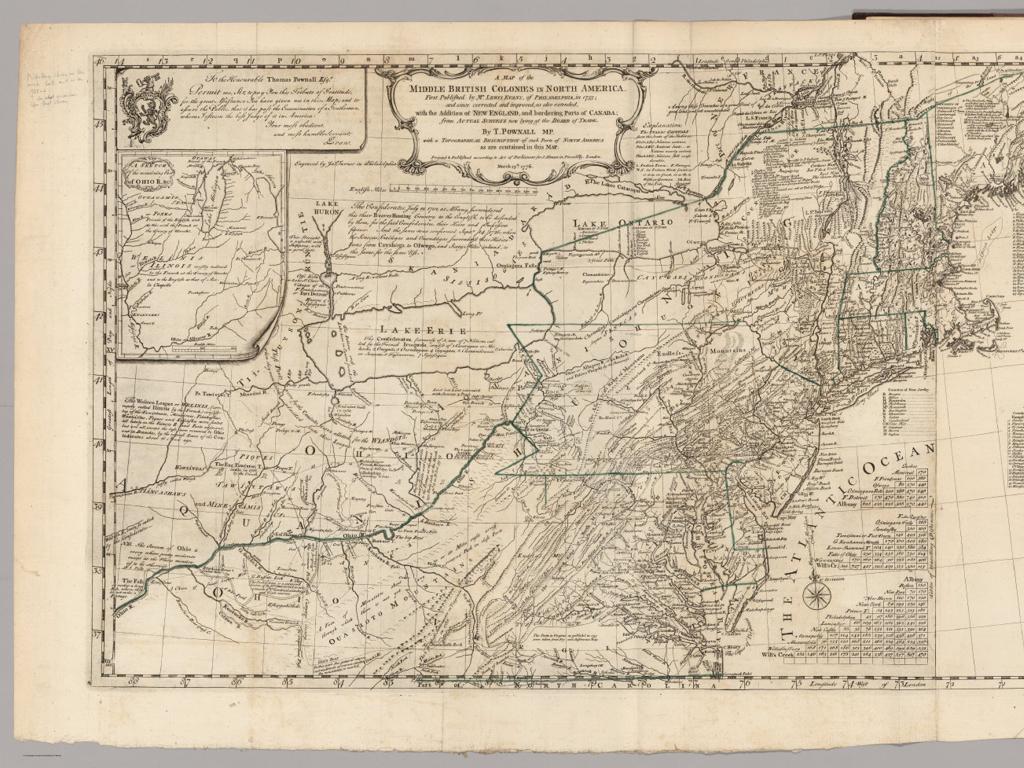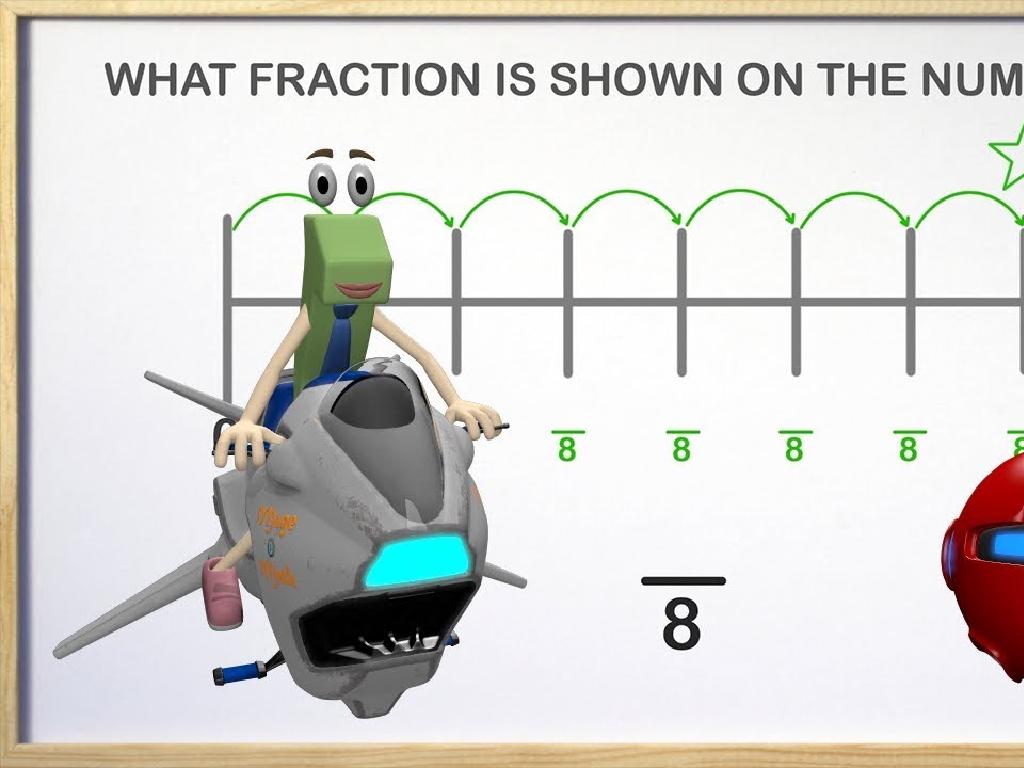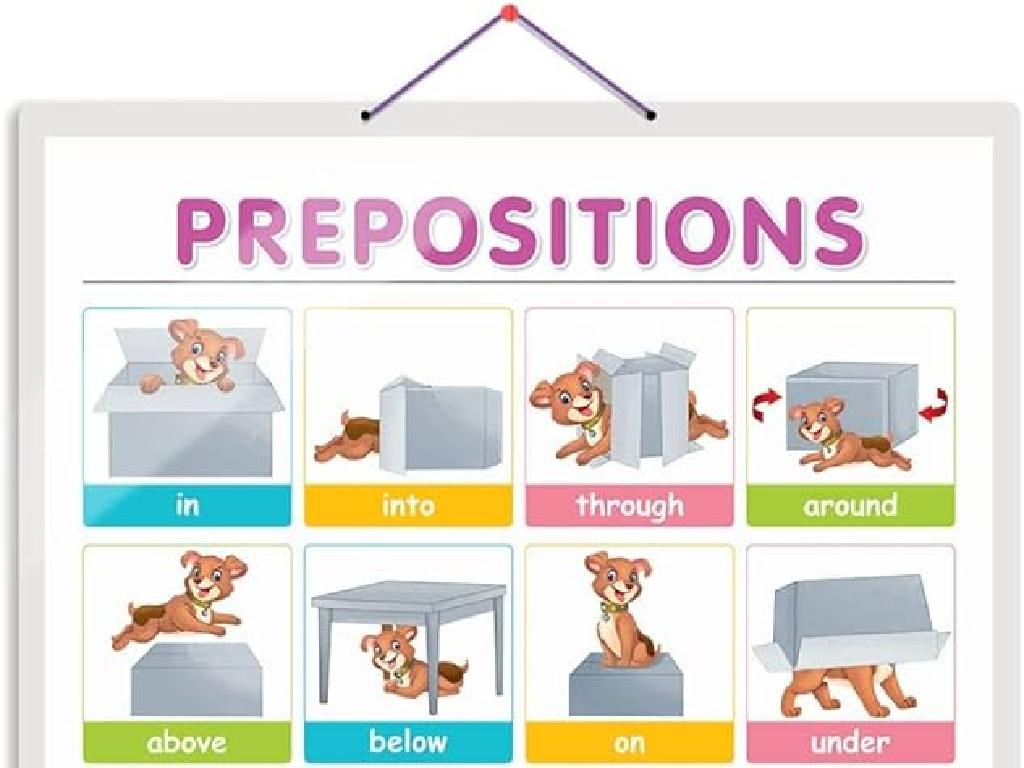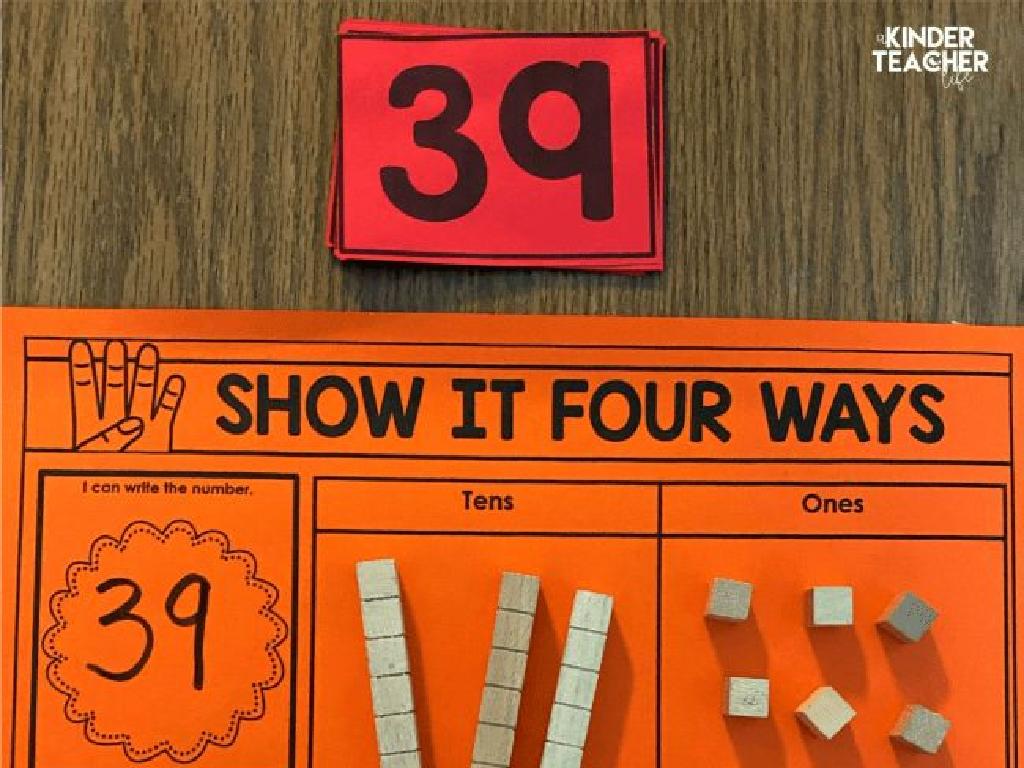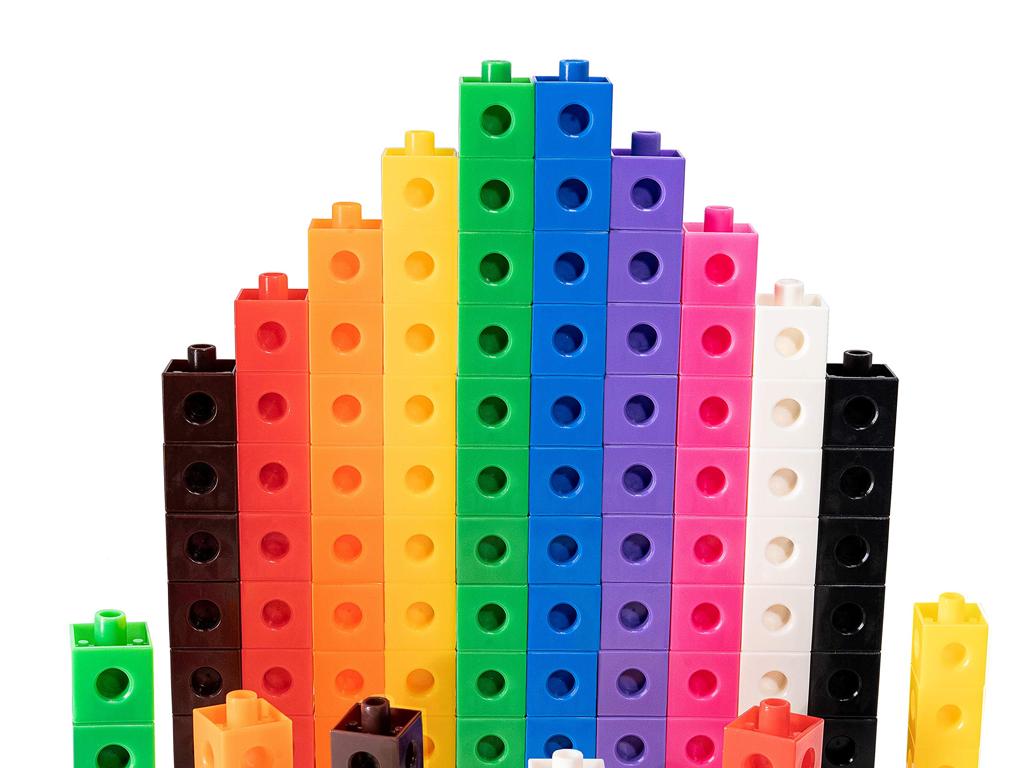Addition Word Problems With Pictures - Sums Up To 5
Subject: Math
Grade: Pre-k
Topic: Addition Up To 5
Please LOG IN to download the presentation. Access is available to registered users only.
View More Content
Welcome to Addition!
– Greet our little learners
– Today’s focus: Adding things together
– Understanding addition
– Addition combines two amounts into a bigger one
– Counting total items
– Use pictures to see how many in all, up to 5
|
This slide is designed to introduce Pre-K students to the concept of addition in a fun and engaging way. Start with a warm greeting to make the children feel comfortable. Explain that addition is a way of finding out how many things we have altogether by combining two groups. Use simple language and real-life examples, such as adding toys or fruits, to illustrate the point. Show pictures with items that they can count, ensuring that the sums do not exceed 5. This will help them grasp the concept visually. Encourage participation by asking them to count along with you. The goal is to make them understand that addition is simply combining two groups and counting the total number of items.
What is Addition?
– Addition combines groups
– Find total items together
– If you have 2 apples and 3 apples, how many in total?
– Adding makes numbers grow
– Practice with sums up to 5
– Use pictures to add: 1 star + 4 stars
|
This slide introduces the concept of addition to Pre-K students. Start by explaining that addition is like putting things together to have a bigger group. Use tangible examples like combining fruits or toys. Show how the total number of items increases when we add. Emphasize that the result is a larger number. Use simple pictures to illustrate addition problems with sums up to 5, allowing students to visually count and understand the concept. Encourage students to use their fingers or objects to practice adding numbers within 5 to reinforce the lesson.
Understanding Addition Symbols
– The plus sign (+) adds up
– The equals sign (=) shows total
– Examples of using symbols
– If we have 2 apples and add 3 more, we write it as 2 + 3 = 5.
– Practice with picture problems
– We’ll solve problems using pictures of objects like fruits or toys.
|
This slide introduces the basic symbols used in addition: the plus sign (+) and the equals sign (=). Explain that the plus sign is used to indicate that two or more numbers will be added together to find the sum. The equals sign shows us what the sum is after we add the numbers. Use visual aids like pictures of apples or toys to illustrate simple addition problems (e.g., 2 apples + 3 apples = 5 apples). Encourage the students to practice by creating their own addition problems using drawings or objects from the classroom. This hands-on activity will help solidify their understanding of addition symbols and prepare them for solving word problems.
Let’s Add with Pictures!
– Count apples in the picture
– Combine groups of apples
– Find the total number of apples
– How many apples are there altogether?
– Understand 2 apples + 3 apples
– 2 apples plus 3 apples equals 5 apples
|
This slide is designed to introduce Pre-K students to the concept of addition using visual aids. Display pictures of apples in two groups: one with 2 apples and another with 3 apples. Ask the students to count the apples in each group first and then combine them to find the total. Reinforce the concept by writing out the addition sentence ‘2 apples + 3 apples’ and guide them to the answer. Encourage the students to use their fingers to count if necessary. This activity helps to build a foundational understanding of addition by visualizing the concept. Make sure to praise their efforts and correct gently if they make mistakes, ensuring a positive learning experience.
Adding with Our Fingers
– Use fingers for adding numbers
– Our fingers are great tools for counting and adding small numbers.
– Example: 1 finger plus 4 fingers
– Think of 1 finger on one hand and 4 on the other hand.
– Show 1 plus 4 on your fingers
– Can you make the number 5 using your fingers?
|
This slide is designed to introduce young learners to the concept of addition by using their fingers, a tangible and accessible tool. Start by explaining that each finger represents one unit. Demonstrate adding 1 finger to 4 fingers to make 5. Encourage the students to hold up 1 finger on one hand and 4 on the other, then combine them to see the total. This visual and physical method of learning helps solidify the concept of addition. For the activity, ask the students to practice with different combinations that add up to 5, ensuring they understand that addition is simply combining two groups of numbers to find the total. This hands-on approach makes learning math fun and interactive.
Adding with Pictures: Word Problems
– Word problems are like stories
– Pictures help us understand stories
– Visual aids make math fun and easy
– We will solve a problem together
– Example: 2 apples + 3 apples shown in a picture
– Adding within 5 using images
|
This slide introduces young learners to the concept of addition through word problems that are supported by pictures. Start by explaining that word problems tell a story about numbers and adding. Emphasize that pictures can help us visualize and solve these stories. Engage the class by reading a simple word problem aloud and solving it as a group, using pictures to illustrate the addition. For instance, show an image with two apples and another with three apples, and guide the students to count all the apples together. This interactive approach helps students grasp the concept of addition in a concrete and enjoyable way. Encourage the children to draw their own pictures for the word problems they solve to reinforce the learning experience.
Class Activity: Picture Addition Fun!
– Try adding using pictures
– We’ll solve problems as a team
– Adding gives us the total number
– If we have 2 apples and 3 apples, we add 2+3 to find the total.
– Let’s find out ‘how many’ together
|
This slide introduces a hands-on activity for Pre-K students to practice addition with sums up to 5 using visual aids. The activity is designed to be interactive, with the teacher guiding the students through the process of adding items in pictures and determining the total number. Possible activities include: using flashcards with pictures, drawing items on the board and adding them together, or providing worksheets with images for students to count and add. Encourage students to verbalize their thought process as they add, reinforcing the concept that addition combines groups to find a total. Praise efforts and ensure a supportive atmosphere where students feel comfortable to participate and make mistakes as they learn.
Review: Adding with Pictures
– Adding combines groups
– Plus sign (+) and equals sign (=)
– Pictures aid in addition
– Visuals like apples or balls show sums up to 5
– Let’s practice with examples
– Example: 2 apples + 3 apples = 5 apples
|
This slide is a recap of what we’ve learned about addition with sums up to 5. Emphasize that adding is about combining groups to find a total. Show the symbols for addition (+) and equals (=) and explain their use in creating addition sentences. Use pictures to illustrate simple addition problems, as visuals are very helpful for Pre-K students in understanding mathematical concepts. Encourage the students to solve addition problems using pictures and to verbalize their thought process. For example, show a picture with two apples and another with three apples, and guide the students to count all apples together to find the total. Reinforce the concept by practicing with different examples.
Fun Addition Game
– Play a game to practice adding
– Use classroom objects for addition
– Count objects together
– How many pencils plus erasers do we have?
– Add numbers up to 5
– If we have 2 blocks and add 3 more, what’s the total?
|
This slide introduces a hands-on addition game for Pre-K students, designed to make learning addition up to 5 fun and interactive. Use familiar objects like blocks, pencils, and erasers to create visual and tangible addition problems. Encourage the students to count aloud as they add the objects together. Possible activities include: 1) Adding different colored blocks, 2) Counting and adding toy fruits, 3) Using stickers on a chart, 4) Grouping and adding classroom items like crayons, and 5) Simple addition with fingers. The goal is to help students visualize the concept of addition and understand that it represents combining two groups of items to find the total amount.

